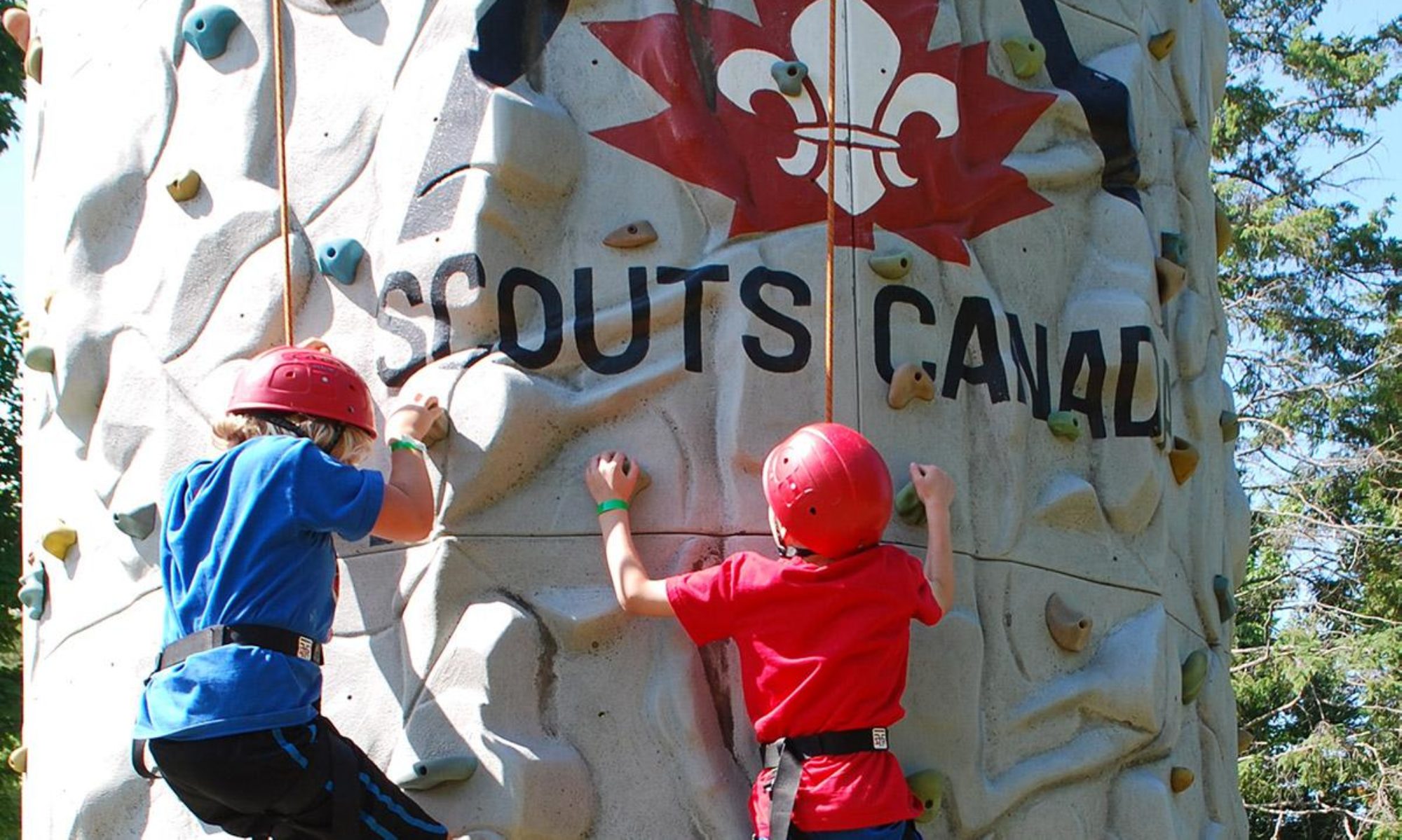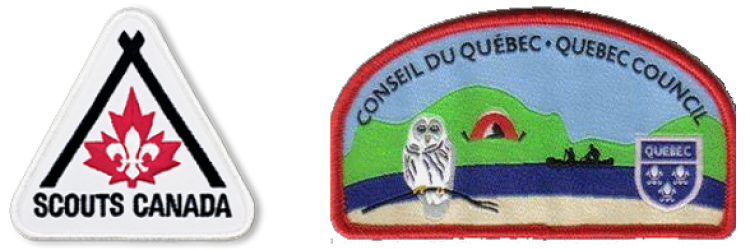Section meeting COVID Checklist [GUIDELINE]
As part of your plans to reopen Scouting in your group / section, there are requirements that you must adopt to ensure you are reducing the risk of transmission of COVID-19 among your youth, Scouters, parents and others.
The Pandemic Program & Activity Modifications Standard outlines in detail the Scouts Canada specific mandatory requirements to support the preparation, execution and follow-up steps for conducting a section-meeting during the COVID-19 pandemic. We anticipate these will be in place until advised by Federal Health Authorities – likely when a vaccine is made widely available and accessible.
This guideline checklist is provided to aid the Scouter-in-Charge and Group Commissioner prepare a section-specific plan to deliver a youth program that meets or exceeds the requirements of the Standard – as well as meet provincial “Operational Plan” regulations.
Note: This document includes provisions for both indoor and outdoor settings and thus may not all be relevant all of the time. This is a guidance document – refer to the standard for requirements.
Plan the Meeting (event, gathering, day-camp, activity etc.).
- How will you ensure awareness of, and compliance with, current local provincial / municipal requirements for COVID-19 preparation and readiness? Specific checks for:
- Approvals of outdoor recreation activities permitted in parks, trails, open spaces (e.g. soccer fields and ball diamonds), open fields and playgrounds.
- Latest requirements / restrictions on mass gathering, PPE, physical distancing, travel, activity specific guidance e.g. swimming, sports etc.
- How will you ensure awareness of, and compliance with, any specific additional requirements for the site / location you are visiting?
All Scouts Canada events / meetings / mass gatherings must be limited to 50 persons or fewer. Section meetings are limited to 16 youth or fewer, split into 2 patrols (small teams). How has the meeting been planned / adjusted to ensure this limit?
How will you ensure the Two-Scouter Rule will be maintained at all times?
What is the plan to ensure, as much as practical, that the meeting / event / gathering has been adapted to ensure individuals can maintain, as much as practical, physical distancing of at least 2 metres from others?- Ensure activities that allow you to maintain physical distancing and you can bring/use your own equipment.
- Choose activities that do not include contact with other individuals.
- Limit congregating with other people when going to and from common areas (e.g. parking lots, trailheads, boat launches, public parks and fields)/li>
- For all outdoor activities – how have you ensured that the Adventure Activity Form (AAF) has been completed satisfactorily for the activity planned? Including an up to date Emergency Response Plan (ERP) and hazard identification review.
Scouters, parents or guardians and youth must not attend the program if they are sick, even if symptoms resemble a mild cold.- Symptoms to look for include fever, cough, shortness of breath, sore throat, runny nose, nasal congestion, headache, and a general feeling of being unwell.
- All ‘at-risk’ / vulnerable persons are strongly advisednot to attend the program, even if they are fit, well and accept their personal risk. This definition varies slightly by province, but in general: Anyone who is:
- an older adult (highest risk are adults > 60 years of age)
- at risk due to underlying medical conditions (e.g. heart disease, hypertension, diabetes, chronic respiratory diseases, cancer)
- at risk due to a compromised immune system from a medical condition or treatment (e.g. chemotherapy)
- from https://www.canada.ca/en/public-health/services/publications/diseases-conditions/vulnerable-populations-covid-19.html
- How have Scouters, parents, youth been informed of the requirements of their participation?
How will you ensure those that are sick or symptomatic will not attend or participate – including cold symptoms.- Scouters should ask parents and guardians to check the temperatures of their children daily before coming to any program. This is consistent to school, day-care, day-camp and other activity provincial requirements.
- A screening question checklist is being developed by Scouts Canada to match those provided by federal and provincial health care authorities.
- How will you ensure, as much as practical, people maintain 2 meters between each other?
- How have games and activities been modified?
- How will you ensure equipment, including sports balls, equipment, will not be shared?
- How would you limit congregating (e.g., in toilets, communal spaces, rest areas, etc.)? Do you have access to rest areas, toilets at the meeting location?
How will you limit the overall number of people in your space – your numbers must include parents / guardians?
If you have vehicles. Do you need to maintain directional traffic flow?
Programs must develop procedures for drop off and pick up that support physical distancing and separate cohorts to the greatest extent possible. Possible strategies include separate cohort entrances, having one designated parent or guardian pick up and drop off each child, staggering entry, or limiting the numbers of people in entry areas.- There should be no non-essential visitors at the program. Parents or guardians are able to attend the program when needed but, should minimize time spent there.
- Individual or group instruction must only be conducted with appropriate physical distancing of at least 2 metres, unless the individuals are from the same household.
- No self-serve or family-style meal service including BBQs. Food provision should be minimized / eliminated where possible / practical.
Food provided by the youth (or family) should be stored with the youth’s belongings or, if refrigeration is required, should be kept in an area designated for the youth’s patrol and should not be handled by others.
Enforce a “no food sharing” policy and ensure all participants bring their own water bottles. Ensure participants label personal belongings.
There should be no common food items (e.g., salt and pepper shakers).
How will you ensure, if applicable, compliance with Federal, Municipal or Provincial Regulations for food handling and preparation? - How will you provide hand washing stations and/or hand sanitizer containing at least 60% alcohol available for all participants?
How will cleaning on high touch surfaces be maintained in your location (e.g., bathroom, chairs, doorknobs, break rooms, equipment)?
How will you train and ensure Scouters, volunteers, youth keep equipment clean? How will you conduct this safely?
If you plan on using chemicals are you aware of the specific handling instructions, the treatment for misuse, the required PPE and other pertinent safety measures for safe use? - How have you planned to ensure all volunteers (legal requirement in many provinces) and youth are screened, before entering the activity area?
- A screening question checklist is being developed by Scouts Canada to match those provided by federal and provincial health care authorities.
- How will you be aware of symptoms in Scouters, volunteers, youth, parents or congregants, such as fever, sore throat, cough, runny nose or difficulty breathing?
Have you provided education or communication of self-monitoring of symptoms?
Have you identified a space where Scouters, parents or youth can be separated from others if they develop symptoms?- If a youth or adult develops symptoms while at the program / meeting, the person should be isolated away from others and the parent or guardian (in case of a child) should be notified to come and pick up the child immediately. If a separate space is not available, the child needs to be kept at least 2 metres away from other children.
- How are you maintaining a log of Scouter, youth and parent / guardian attendance for the purposes of contact tracing if required by the authorities?
What is your response plan for a Scouts member who comes to an event with symptoms? - Meetings, events and activities should be designed to eliminate the need to be less than 2 meters apart, thus not requiring the use of PPE.
As a back-up: If 2 meters cannot be maintained and PPE is necessary, where would you obtain it? Have you considered physical barriers to reduce exposure when 2-metre distancing is hard to maintain?
Will you need specific PPE for the purposes of cleaning? What will you require? - Who will be responsible for ensuring Scouters, parents / guardians and youth are following your precautions?
Have you updated contact information for Scouters, parents and youth so that they can be notified in the event of a known exposure?
What would your approach be if you had to manage a situation where there was apparent non-compliance with your plans/direction? - Have you updated the section Emergency Response Plan (ERP)? Does it include COVID specific risks pertinent to the location you will be visiting?
Has the hazard and identification plan been updated for the location you plan on visiting?
Do you have a plan for how to deal with an emergency under COVID conditions – how will you maintain as much as practical physical distancing?
Do you have enough first aiders attending the meeting? DO you have spare face masks in case you need to be working in closed proximity in an emergency? - How will you ensure the meeting is reviewed for what worked well, what could be improved, what will we do differently next time?
How will you inform the Group Commissioner and other sections of your learnings and improvements?
Do the Meeting
Distancing Measures: These are applicable to all attendees – including parents / guardians who are dropping off youth at an event / meeting.
Food Provision: Eliminate or minimize food provision.
Cleaning: All equipment and spaces to be cleaned and disinfected prior to and after use.
Screening for symptoms:
Personal Protective Equipment:
Responsibilities:
Emergency Response & Risk Management:

